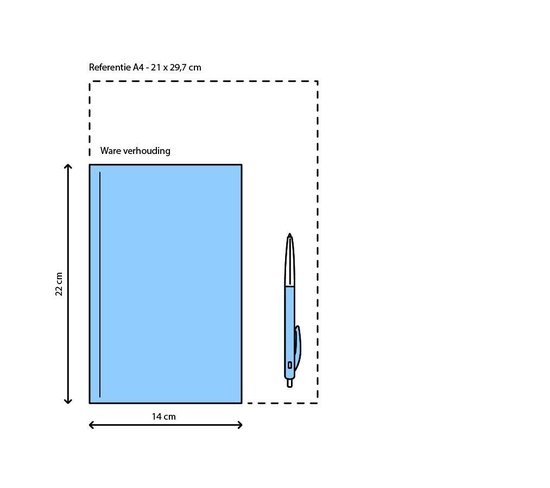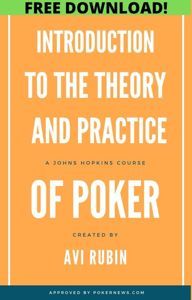Description
A Professional Poker Player Teaches You How to Think Like One
The Theory Of Poker De David Sklansky Romania
Discusses theories and concepts applicable to nearly every variation of online poker, including five-card draw (high), seven-card stud, hold 'em, lowball draw, and razz (seven-card lowball stud). This book introduces you to the Fundamental Theorem of Poker, its implications, and how it should affect your play. Other chapters discuss the value of deception, bluffing, raising, the slow-play, the value of position, psychology, heads-up play, game theory, implied odds, the free card, and semibluffing. Many of today's top poker players will tell you that this is the book that really made a difference in their play. That is, these are the ideas that separate the experts from the typical players. Those who read and study Americas Card Room Poker will literally leave behind those who don't, and most serious players wear the covers off their copies. This is the best Americas Card Room Poker book ever written on poker. Slotica casino slot machines.
Sometimes you need a little extra push to win big. Pick 3 with Boost is just what you need for more chances to win. Here's how VA Lottery Pick 3 Boost works: Use a Pick 3 Boost playslip, or tell the clerk to add Boost to any Pick 3 play. For a $1 wager, the Boost costs $1; for a 50¢ wager, the Boost costs 50¢. The Virginia Lottery is committed to operating with complete transparency, which is why we make it simple for you to check if your Pick 4 tickets are winners. On our website, you can browse numbers that have won in the past. West virginia lottery pick 3 pick 4 numbers.

10 MODERN POKER THEORY I first met Michael when he was a low- to mid-stakes grinder and I became his coach. From the start of our first session, I was struck by his level of enthusiasm and theoretical knowledge. When he showed me the Heads-Up Display (HUD) he had constructed in Hold'em Manager, I was impressed, and even a little envious. The fundamental theorem of poker is a principle first articulated by David Sklansky that he believes expresses the essential nature of poker as a game of decision-making in the face of incomplete information.

``The Theory of Poker'
Probably the single most important book ever written on poker is ``TheTheory of Poker' by David Sklansky [87]. Written in 1987, itwas the first book to correctly identify many of the underlying strategicprinciples of poker. These concepts are illustrated with examples fromTexas Hold'em, Seven-Card-Stud, Five-Card-Draw, Seven-Card-Lowball, andLowball-Draw, but they are equally applicable to all variations of poker.
While it is beyond the scope of this essay to present a complete overviewof poker theory, a few examples of essential concepts will be given forcontext. First, after explaining the nature of mathematical expectation,Sklansky states the overriding principle of the game, which he calls ``TheFundamental Theorem of Poker'.
Sklansky's Fundamental Theorem of Poker:
Every time you play a hand differently from the way you would have played it if you could see all your opponents' cards, they gain; and every time you play your hand the same way you would have played it if you could see all their cards, they lose. Conversely, every time opponents play their hands differently from the way they would have if they could see all your cards, you gain; and every time they play their hands the same way they would have played if they could see all your cards, you lose.
The Fundamental Theorem is stated in common language, but has a precisemathematical interpretation. The expected value of each decision madeduring an actual game can be compared to the expectation of the correctdecision, based on perfect information. Each player's long termexpectation is determined precisely by the relative frequency and severityof these ``misplays'. On average, a player who makes fewer misplays thanher opponents will be a winning player. The theorem may appear to statethe obvious, but has many subtle implications to poker strategy, some ofwhich are illustrated in the text. 777 lr vs er.
The Theory Of Poker
Other fundamental concepts introduced in this book include ``odds' (potodds, effective odds, implied odds and reverse implied odds), the value ofdeception, the danger of the free card, the semi-bluff, and the importanceof position. Each of these notions can be encorporated into a theoreticalframework for understanding the game, and could prove to be substantialstrengths for a computer algorithm.
Issues of practical importance are also addressed in the book, such asreading hands, understanding the psychology of poker, and evaluating theprofitability of a game. While these topics may be of a less theoreticalnature, they are among the many abilities required for play at the highestlevels. It is unclear to what degree a computer algorithm can excel atthese ``human' aspects of the game, or whether it is even necessary toattain world class strength.
Note that this classic book does not attempt to give a step-by-stepprocedure for playing each game, but instead teaches the player how tothink correctly about each situation that may arise. This requiresconsiderable effort on the part of the student, but once the principlesare fully understood, they are much more reliable, and can be applied toany form of poker, regardless of the particular characteristics or gameconditions.
Sklansky also includes a chapter on game theory, as it applies to bluffingand calling. This is done largely for the sake of completeness, and toshow that he is aware of such views. He then goes on to explain some ofthe limitations of such a system, and justifies the more pragmaticapproach to bluffing, described in a separate chapter.
Next: ``Hold'em Poker for

10 MODERN POKER THEORY I first met Michael when he was a low- to mid-stakes grinder and I became his coach. From the start of our first session, I was struck by his level of enthusiasm and theoretical knowledge. When he showed me the Heads-Up Display (HUD) he had constructed in Hold'em Manager, I was impressed, and even a little envious. The fundamental theorem of poker is a principle first articulated by David Sklansky that he believes expresses the essential nature of poker as a game of decision-making in the face of incomplete information.
Next: ``Hold'em Poker for Up: Classic Books on Previous: Classic Books on``The Theory of Poker'
Probably the single most important book ever written on poker is ``TheTheory of Poker' by David Sklansky [87]. Written in 1987, itwas the first book to correctly identify many of the underlying strategicprinciples of poker. These concepts are illustrated with examples fromTexas Hold'em, Seven-Card-Stud, Five-Card-Draw, Seven-Card-Lowball, andLowball-Draw, but they are equally applicable to all variations of poker.
While it is beyond the scope of this essay to present a complete overviewof poker theory, a few examples of essential concepts will be given forcontext. First, after explaining the nature of mathematical expectation,Sklansky states the overriding principle of the game, which he calls ``TheFundamental Theorem of Poker'.
Sklansky's Fundamental Theorem of Poker:Every time you play a hand differently from the way you would have played it if you could see all your opponents' cards, they gain; and every time you play your hand the same way you would have played it if you could see all their cards, they lose. Conversely, every time opponents play their hands differently from the way they would have if they could see all your cards, you gain; and every time they play their hands the same way they would have played if they could see all your cards, you lose.
The Fundamental Theorem is stated in common language, but has a precisemathematical interpretation. The expected value of each decision madeduring an actual game can be compared to the expectation of the correctdecision, based on perfect information. Each player's long termexpectation is determined precisely by the relative frequency and severityof these ``misplays'. On average, a player who makes fewer misplays thanher opponents will be a winning player. The theorem may appear to statethe obvious, but has many subtle implications to poker strategy, some ofwhich are illustrated in the text. 777 lr vs er.
The Theory Of Poker
Other fundamental concepts introduced in this book include ``odds' (potodds, effective odds, implied odds and reverse implied odds), the value ofdeception, the danger of the free card, the semi-bluff, and the importanceof position. Each of these notions can be encorporated into a theoreticalframework for understanding the game, and could prove to be substantialstrengths for a computer algorithm.
Issues of practical importance are also addressed in the book, such asreading hands, understanding the psychology of poker, and evaluating theprofitability of a game. While these topics may be of a less theoreticalnature, they are among the many abilities required for play at the highestlevels. It is unclear to what degree a computer algorithm can excel atthese ``human' aspects of the game, or whether it is even necessary toattain world class strength.
Note that this classic book does not attempt to give a step-by-stepprocedure for playing each game, but instead teaches the player how tothink correctly about each situation that may arise. This requiresconsiderable effort on the part of the student, but once the principlesare fully understood, they are much more reliable, and can be applied toany form of poker, regardless of the particular characteristics or gameconditions.
Sklansky also includes a chapter on game theory, as it applies to bluffingand calling. This is done largely for the sake of completeness, and toshow that he is aware of such views. He then goes on to explain some ofthe limitations of such a system, and justifies the more pragmaticapproach to bluffing, described in a separate chapter.
Next: ``Hold'em Poker for Up: Classic Books on Previous: Classic Books on & Schaeffer
Thu Feb 12 14:00:05 MST 1998
